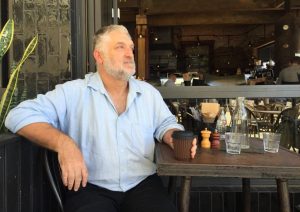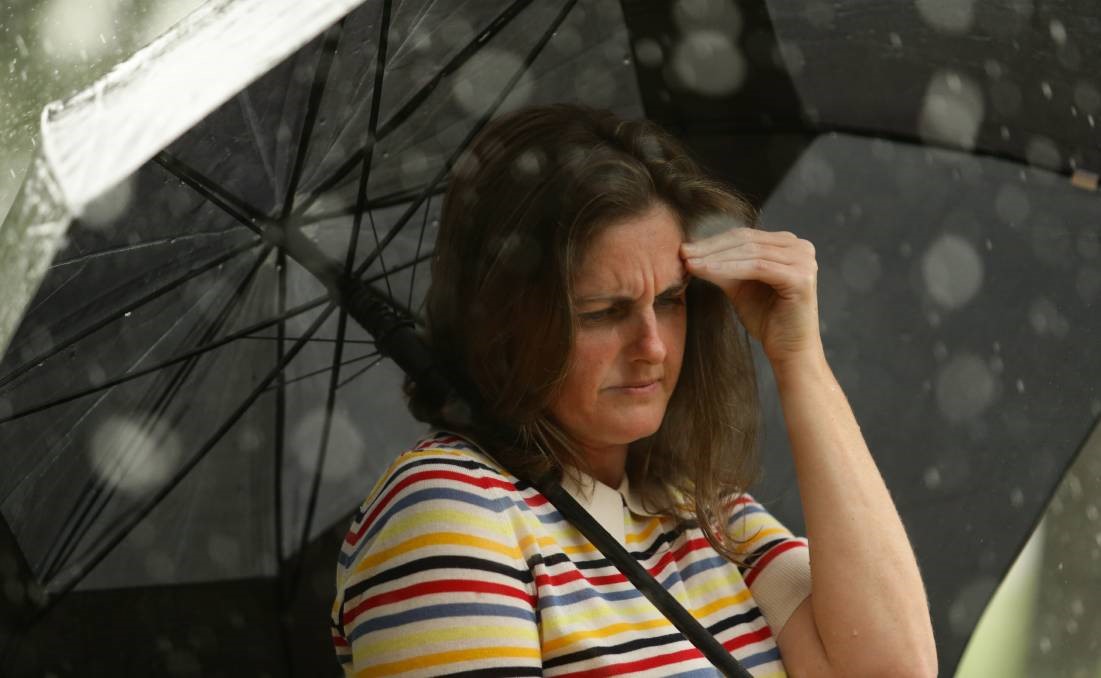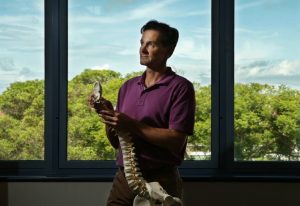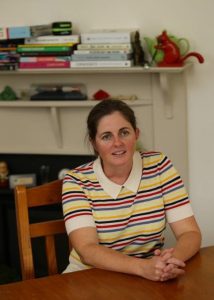By Michael Parris
5 Mar 2017
A branch of physiotherapy is offering relief to sufferers.
I can sense Greg Cleveland’s burden, his 51 years of suffering, when I meet him at a Newcastle cafe. He is tall and thickset, but his every word, every laugh and gesture, is careful, muted, as though he is secretly deactivating a bomb while he talks.
The Adamstown Heights man is a long-term migraine sufferer. He was first diagnosed and hospitalised in Scone at age seven, 12 months after being involved in a car accident. By the time he was a teenager, they became severe enough to make him throw up. Sometimes they literally leave him tearing his hair out. Not surprisingly, he has suffered from depression.
Somehow he found the strength to complete an engineering degree at the University of Newcastle and work around Australia as a consultant and project manager. Wherever he went, the headaches went with him.
“I remember my wife came home one day and thought I’d had a heart attack,” he says. “I was on the floor. I couldn’t move, and it was because my headache was that bad.”
Now 58, Cleveland has tried “everything you can think of” to find relief: neurology, chiropractic medicine, brain scans, X-rays, massage, acupuncture, medication.
“I’ve been suffering basically on and off for 51 years. There’s heaps of people that claim to be able to cure headaches.”
His is a harrowing story. It doesn’t have the happy Hollywood ending: there is no miracle cure. But Greg has found a good deal of relief in the past two months – enough to make his life “manageable” – since his GP referred him to Damien Cummins, one of a handful of physiotherapists in Australia who specialise in treating headaches using manual therapy on the upper neck.
“I was getting two to three bad migraines a week, to the point where they were debilitating,” Cleveland says. “So I had an appointment with him, and basically right from the very first treatment there was a marked improvement in my migraines.”
Greg Cleveland has been living with migraine headaches for 51 years. Picture: Michael Parris
He says he still gets headaches – “he never promised to cure me” – but they are less frequent and far less severe.
“I suffer from depression. I went to my doctor and said, ‘Do you know what’s going on? I have a good job, good house, good family. I have nothing to be depressed about.’ And she said it was just from putting up with pain for so long.
“If I woke up with a headache previously, by the end of the day I’d be that crook that I wouldn’t be able to drive or do anything. Now I can do a few exercises and by lunchtime or mid-afternoon it’s faded.
“I was a bit sceptical when I went because I’ve been to that many people. You just grin and bear it. You get to the point where no one’s going to help and this is just the way it is and there’s people who are a lot worse off than I am. But it’s improved my life to the point where I can start doing more stuff in my time off. In the old days it would be get home, take more than the prescribed dose of tablets and then go to bed and not move. Now I can go home and still function.”
Cummins has been focusing on headache treatment for the past five years and set up the Newcastle Headache Clinic as an offshoot of his Mayfield physio practice.
A fit, angular 47-year-old with an enviable sweep of dark hair, he talks excitedly about his work, leaning forward, imploring you to share his enthusiasm. He is quick to point out that he is no miracle worker, that his clinic is one of several treatments available to patients, and that he can’t help everyone, but even Newcastle pain specialist Dr Anthony Schwarzer says his colleague has a “special ability” for diagnosing and treating headaches through manual therapy.
“We see amazing results with some people who are struggling,” Cummins says. “The person often doesn’t realise their neck is such a big part of the problem. And it doesn’t seem to matter how chronic the condition is.”
He and Dr Schwarzer presented a talk to Hunter doctors on Tuesday about establishing a pathway for treatment starting with GPs, via physiotherapy assessment and therapy and then on to pain specialists if the manual therapy does not work.
Cummins, who is undertaking his own research through the University of Newcastle, says there is “slowly mounting evidence” suggesting a link between neck stiffness or tenderness and many headaches, and that manual therapy can help.
He says research has showed that about 20 per cent of headaches are cervicogenic, or neck-related, and that manual therapy can offer clear benefits in these cases. But clinical practice is indicating that such treatment can also help migraine sufferers if their neck is one of the triggers for their pain.
“What we think is going on is the brain stem is sensitised, so the brain stem gets signals from the upper three neck joints, as well as signals from lots of other places.
“There’s some early research that’s coming out that we can use neck mobilisation – we can normalise the neck movement – and it can have a desensitising effect on the brain stem. We don’t know how it works yet.
Damien Cummins at his Mayfield physio practice . . . ‘You just change their lives. It’s unbelievable. It’s great. It’s fun.’ Picture: Jonathan Carroll
“Neurologists treat this sensitisation with the use of medications to desensitise the brain stem. That’s established. We know migraine is to do with this sensitisation issue, but we didn’t know that the neck treatment can have a desensitising effect. There’s really strong evidence to suggest we’re having an effect on the nervous system. We just don’t know why.”
Dr Schwarzer, who trained as a rheumatologist and pain specialist, has a PhD in spine medicine and a masters degree in pain management from Sydney University. He is a former senior lecturer in anatomy at Newcastle University and has fellowships with the Royal Australasian College of Physicians, the Faculty of Pain Medicine in the Australian and New Zealand College of Anaesthetists and the Australasian Faculty of Musculoskeletal Medicine. He is also an original member and former president of the US-based Spine Intervention Society. It’s fair to say he knows what he’s talking about.
He says Cummins has developed a special interest in the management of neck pain and headaches and is seeking to add a scientific foundation to his work.
Dr Schwarzer, whose research on spinal pain has built on the work of celebrated Newcastle spinal pain specialist and anatomist Dr Nikolai Bogduk, regards Cummins’ treatment as a valuable option for some of his patients.
“He’s helped in the management of patients with neck pain and headaches,” Dr Schwarzer says. “He sorts out whether the patient is mechanically responsive. If he gives them relief long-term, they stay with him. If it’s short-term, then he can actually identify a source of pain we can do something more with using injections and other treatments.”
“Likewise, if I do the nerve blocks and radiofrequency treatment, which we offer for neck pain, they’ll come back to Damien for further treatment. It was probably not mainstream 20 years ago, but it’s probably more sophisticated and accepted now.
“Damien is enthusiastic about ensuring what he does is backed up and validated by my diagnostic work.”
Dr Schwarzer says most specialists in the field are keen to avoid long-term medication and invasive procedures when possible.
“They would all be supportive of what he [Cummins] does. I don’t know how many of them know he exists, to be honest. Again, they would have the view that anything to avoid surgery would be the way to go.”
Another of Cummins’ patients, Katerina Mudd, a 54-year-old legal assistant from Maryland, says her headaches had turned her into a “cranky pants”, avoiding family events, movies, restaurants and her musician sons’ concerts. She was taking Voltaren every few days to alleviate her symptoms, but the pain would cycle back. Her doctor referred her to a neurosurgeon, who in turn suggested physiotherapy as a first alternative to desensitising injections in her neck.
“I left his office that morning and I rang Damien’s office as soon as I got out the door. I was desperate. I really needed something that day. I was disappointed I didn’t get a jab, but I know you have to try other things.
“I still had a headache when I went and saw him the next day. The day after that I woke up and there was no headache. I couldn’t believe it. I thought, ‘Oh my god. I’m so onto a good thing here.’
“And then the first eight days I went four times. Each time I went it felt better and better and he gave me exercises to do, which I did religiously. I’m over the moon. I haven’t had a headache since.”
Mudd, who has arthritis in her fingers, feet, shoulder and neck, says the treatment has transformed her life.
“I can look over my left shoulder now when I’m driving. Just the little things that bring joy to my psyche now, whereas before it was like, ‘I can’t – I’ve got a headache. I can’t do this and I don’t want to do that and I don’t want to go there, and I don’t want to go to the movies because it’s too loud.’
“It’s unbelievable, and I said to my husband, ‘I wonder how many people out there are suffering?’ We need to get it out there.”
Cummins has trained under Australian physiotherapist Dean Watson, the founder of the Watson Headache Approach and a researcher at Perth’s Murdoch University.
He says he is far from a saviour, despite the messianic way some of his patients talk about him.
“I’m not. There’s other people who can do this, and the goal is to train other physios. I’m training other people at work, and they’re getting better at it. I’m treating 40 necks a week, and that’s all I’m doing.”
Charlestown neurosurgeon Dr Richard Ferch says he often sends patients to Cummins due to his specialisation and expertise.
“Headaches are commonly associated with neck problems, and treatment of the neck problem can improve the headaches, and surgery doesn’t generally improve them,” Dr Ferch says.
Mayfield nurse Alison Wright says it did not occur to her there could be a link between her neck pain and headaches until a GP colleague suggested she see Cummins.
The 38-year-old had an operation two years ago on a shoulder she injured playing rugby, then began to feel increasing pain in her neck. About the same time she started to suffer regular headaches, from behind her left ear to her left temple.
“I was probably taking at least a day off work a month. I was having them a couple of times a week. I think within probably the first two or three treatments I was starting to feel better already, hadn’t had a headache for probably a couple of days. He’s able to manipulate a spot and replicate a headache. He’ll push a spot and I’ll go, ‘Yep, that’s it.’
“I even get the occasional migraine which is actually completely on the other side of my head, and I must say I’ve had nowhere near the occurrence that I’ve had since we started doing this.”
Wright, who does her daily neck exercises sitting at traffic lights on the way to work, says she is down to monthly visits to the clinic and Cummins is “weaning me off him”.
Cummins says he can tell within four or five visits if his treatment is working.
“You can’t help everyone, either. It’s not like a cure-all. If we can’t change anything in four or five goes, you’re wasting your time. I usually say, ‘I’ll sack myself from treating you.’ But with many patients certainly there is a clear effect. You just change their lives. It’s unbelievable. It’s great. It’s fun.”
Mayfield nurse Alison Wright . . . ‘Within the first two or three treatments I was starting to feel better already.’ Picture: Jonathan Carroll
“He’s able to manipulate a spot and replicate a headache. He’ll push a spot and I’ll go, ‘Yep, that’s it.’
“It was all related to that musculoskeletal positioning. He had me doing strengthening exercises and realignment, and it’s just been amazing.
“I even do get the occasional migraine which is actually completely on the other side of my head, and I must say I’ve had nowhere near the occurrence that I’ve had since we started doing this.”
Alison, who does her daily neck exercises while sitting at traffic lights on the way to work, says she is down to monthly visits to the clinic and Cummins was “weaning me off him”.
Cummins says he can tell within four or five visits if his treatment is working.
“You can’t help everyone, either. It’s not like a cure-all. If we can’t change anything in four or five goes, you’re wasting your time. I usually say, ‘I’ll sack myself from treating you.’
“But with many patients certainly there is a clear effect. You just change their lives. It’s unbelievable. It’s great. It’s fun.”



